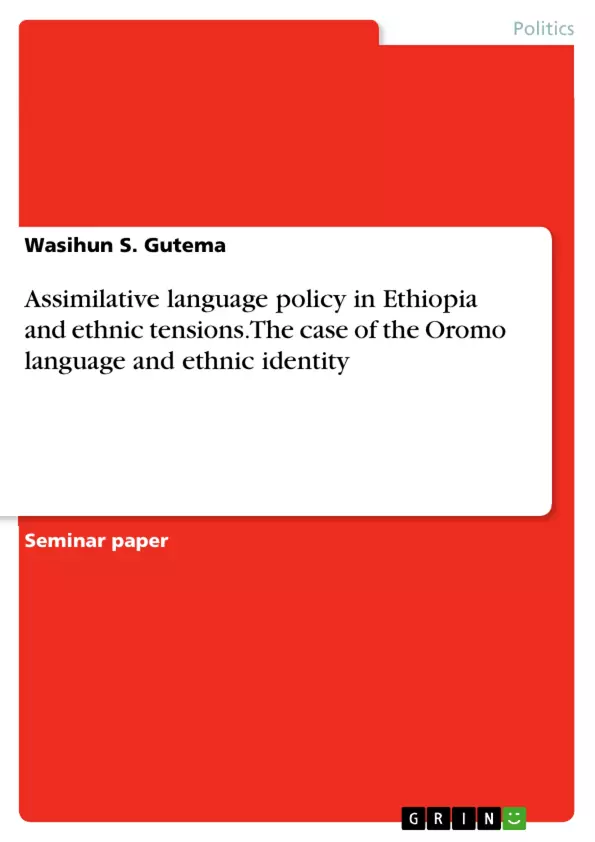The study detailed in this paper digs into the assimilative language policy of Ethiopia and how this language policy is fueling ethnic tensions. The paper elaborates specifically on the Oromo language, hereafter Afaan Oromo, and how the speakers of the language are marginalized so as to be included into the Ethiopian identity, an identity believed to be of civilization, through assimilative language policy.
This assimilation countered pluralism or diversity in a brutal way in order to homogenize the diverse Ethiopian population - particularly the largest Ethnic group, the Oromo - into the Ethiopian identity or Ethiopianism. As the Ethiopian identity, an identity emanating from and of the ruling class, the Amhara population and the Amharic language, it was a solid state-building instrument with the power of creating belonging and loyalty to the state.
Although this policy of assimilation was seemingly countered by the communist regime soon after the communists came to power in 1974, in essence the communist policy did not deter from the predecessor’s language policy of centralization. The centralization process through the Ethiopian identity-making via language suppression and depriving one of one’s identity seemed to come to an end, once again, in 1991 with the fall of the communist regime and the end of singularity, which is the idea of one nation with one language.
Although pluralism is growing, still ethnic tensions are high and accompanied by vast grievances about the past and about how the current regime handles ethnic tensions, language issues especially. The example of Afaan Oromo, a predominately spoken language in Ethiopia, is pertinent, as speakers of the language are deprived of job placement in the federal government and systemic means of marginalizing the language are used.
Inhaltsverzeichnis (Table of Contents)
- Introduction
- Literature Review
- Who are the Oromo?
- Chronology of Assimilative processes and The place of the Oromo language
- Applicable Diverse Theory
- Conclusion
- References
Zielsetzung und Themenschwerpunkte (Objectives and Key Themes)
This paper delves into the assimilative language policy of Ethiopia and its impact on ethnic tensions, specifically focusing on the Oromo language and identity. It examines how this policy has marginalized Oromo speakers and contributed to the homogenization of Ethiopia's diverse population.
- Assimilative language policy in Ethiopia
- The role of language in state building and identity formation
- The marginalization of the Oromo language and identity
- Ethnic tensions and the impact of language policy
- The future of Ethiopia in relation to social construction and identity theories
Zusammenfassung der Kapitel (Chapter Summaries)
The introduction lays out the historical context of assimilative language policies in Ethiopia and their role in state building. It highlights the suppression of ethnic identities to create a homogenous state and the role of language in creating loyalty and belongingness to the state. The literature review explores the concept of language imperialism and how certain languages dominate others, often for political and economic reasons. It discusses the consequences of assimilation and domination on identity and language, leading to social inequalities.
Schlüsselwörter (Keywords)
The main keywords and focus topics of this text include: Afaan Oromo, Amharic, Amharization, Arabization, Communist regime, EPRDF, Ethiopia, Ethiopianism, Haile Silassie, Mengistu, the FDRE, Oromo, Oromia.
- Quote paper
- Wasihun S. Gutema (Author), 2016, Assimilative language policy in Ethiopia and ethnic tensions. The case of the Oromo language and ethnic identity, Munich, GRIN Verlag, https://www.grin.com/document/352264



